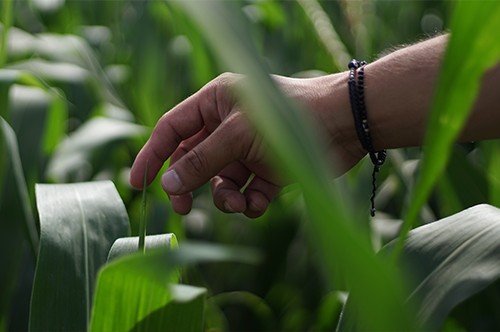Challenges and Opportunities in the Agrochemicals Sector

Image courtesy of Bayer Crop Science

Ana Claudia Cerasoli, President – Meso-Andean Region, Corteva Agriscience
“Understanding the level of challenges of the industry to enhance food security and sustainability is a central point for everyone working in the agriculture sector. The Global Food Security Index (GFSI) measures the level of food affordability, availability, quality, safety, and more recently, natural resources and resilience across various countries. It is a source of information which drives government decisions and legislation, as well as the industry’s R&D focus. Over the years, the Index has shown that although European countries have some issues, they occupy the best positions in the ranks and make up seven of the top 10 countries in this index.
Looking at Mexican results, we can clearly see areas where the country has improved and where attention should still be given. During the past 10 years, Mexico has improved significantly in the availability of food, which is the result of a great reduction in the volatility of the county’s agricultural production. On the negative side, Mexico had a decrease in accessibility, mainly due to the average cost of food and farming in the country. Through the use of innovation, Corteva aims to empower farmers to tackle food security.”

Nery Echeverría, Head of Sales – Mexico, Bayer Crop Science
“The food industry is the sector with the highest growth in recent years in Mexico. The country has specialized in export crops like vegetables, avocadoes, and berries for which we have favorable weather conditions, and the technology the farmers have adopted in the last years is world-class. This has created a surplus for Mexico: in 2020 we exported almost US$40 billion in the food industry, and imported US$27 billion, equaling a US$12.3 billion surplus.
That sector growth, however, is not the same for all crops. While export agriculture has taken advantage of our vicinity with the US, in the center and south of Mexico we have an agriculture more dependent of yearly crops, where growth and productivity have increased but not been at same rate. As country and industry, we must ensure farmers have access to all the technology available.”

Javier Valdes, Managing Director, Syngenta Mexico
“Research companies like Syngenta play a key role in food production. If we did not have protection against biological problems such as pests, diseases and weeds, the world would lose 40% of its agricultural production. At Syngenta we are working on biological products, but for some problems, the pressure of disease is so high that we need traditional agrochemicals to handle the volume that the world population demands. Great progress has already been made: since 1950, we have reduced the amount of agrochemical products that are needed to protect crops by 90%.”

Francisco Ortiz, Director General, Altiara
“To better support the agriculture industry, the Mexican government’s list of materials that must be recycled leaves room for interpretation when it mentions pesticides and agrochemicals but excludes many widely used supplies. This list should be more clear.
Secondly, the government halted its operations against companies that sell without a COFERPIS authorization around three years ago. As a result, this market has multiplied. Each year we hold a census at AMOCALI to legally and ethically collect containers; we have discovered around 500 companies selling unregistered products, which represents a real health risk. The Mexican government should get involved to stop this trend.”

Jorge Alfredo Casas García, Director General – Commercialization and Marketing, Agri Star México
“One of the challenges with respect to technology adoption is that farmers tend to be older folk who manage their production with their own traditional parameters, and have a limited acceptance of new technologies. With this in mind, we looked for projects with more short-term impact to display benefit quickly, which are more likely to be adopted. An example would be corn seeds; to go from a creole seed to a high-performance seed for a reasonable cost we gather evidence for the farmer to compare and understand that if they invest more they can get a higher profit. We are seeing regions making progress on this front, as is the case of Oaxaca, that is moving from corn to agave for the production of mezcal. The mezcal producers are looking for financing and technology, and that is where we come in.”
Image courtesy of Bayer Crop Science

Ana Claudia Cerasoli, President – Meso-Andean Region, Corteva Agriscience
“Understanding the level of challenges of the industry to enhance food security and sustainability is a central point for everyone working in the agriculture sector. The Global Food Security Index (GFSI) measures the level of food affordability, availability, quality, safety, and more recently, natural resources and resilience across various countries. It is a source of information which drives government decisions and legislation, as well as the industry’s R&D focus. Over the years, the Index has shown that although European countries have some issues, they occupy the best positions in the ranks and make up seven of the top 10 countries in this index.
Looking at Mexican results, we can clearly see areas where the country has improved and where attention should still be given. During the past 10 years, Mexico has improved significantly in the availability of food, which is the result of a great reduction in the volatility of the county’s agricultural production. On the negative side, Mexico had a decrease in accessibility, mainly due to the average cost of food and farming in the country. Through the use of innovation, Corteva aims to empower farmers to tackle food security.”

Nery Echeverría, Head of Sales – Mexico, Bayer Crop Science
“The food industry is the sector with the highest growth in recent years in Mexico. The country has specialized in export crops like vegetables, avocadoes, and berries for which we have favorable weather conditions, and the technology the farmers have adopted in the last years is world-class. This has created a surplus for Mexico: in 2020 we exported almost US$40 billion in the food industry, and imported US$27 billion, equaling a US$12.3 billion surplus.
That sector growth, however, is not the same for all crops. While export agriculture has taken advantage of our vicinity with the US, in the center and south of Mexico we have an agriculture more dependent of yearly crops, where growth and productivity have increased but not been at same rate. As country and industry, we must ensure farmers have access to all the technology available.”

Javier Valdes, Managing Director, Syngenta Mexico
“Research companies like Syngenta play a key role in food production. If we did not have protection against biological problems such as pests, diseases and weeds, the world would lose 40% of its agricultural production. At Syngenta we are working on biological products, but for some problems, the pressure of disease is so high that we need traditional agrochemicals to handle the volume that the world population demands. Great progress has already been made: since 1950, we have reduced the amount of agrochemical products that are needed to protect crops by 90%.”

Francisco Ortiz, Director General, Altiara
“To better support the agriculture industry, the Mexican government’s list of materials that must be recycled leaves room for interpretation when it mentions pesticides and agrochemicals but excludes many widely used supplies. This list should be more clear.
Secondly, the government halted its operations against companies that sell without a COFERPIS authorization around three years ago. As a result, this market has multiplied. Each year we hold a census at AMOCALI to legally and ethically collect containers; we have discovered around 500 companies selling unregistered products, which represents a real health risk. The Mexican government should get involved to stop this trend.”

Jorge Alfredo Casas García, Director General – Commercialization and Marketing, Agri Star México
“One of the challenges with respect to technology adoption is that farmers tend to be older folk who manage their production with their own traditional parameters, and have a limited acceptance of new technologies. With this in mind, we looked for projects with more short-term impact to display benefit quickly, which are more likely to be adopted. An example would be corn seeds; to go from a creole seed to a high-performance seed for a reasonable cost we gather evidence for the farmer to compare and understand that if they invest more they can get a higher profit. We are seeing regions making progress on this front, as is the case of Oaxaca, that is moving from corn to agave for the production of mezcal. The mezcal producers are looking for financing and technology, and that is where we come in.”